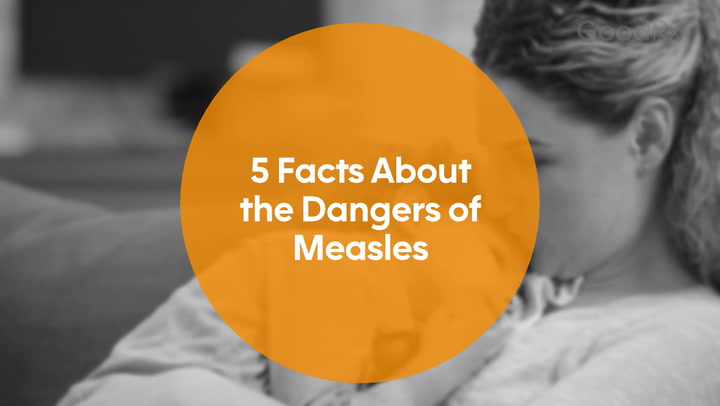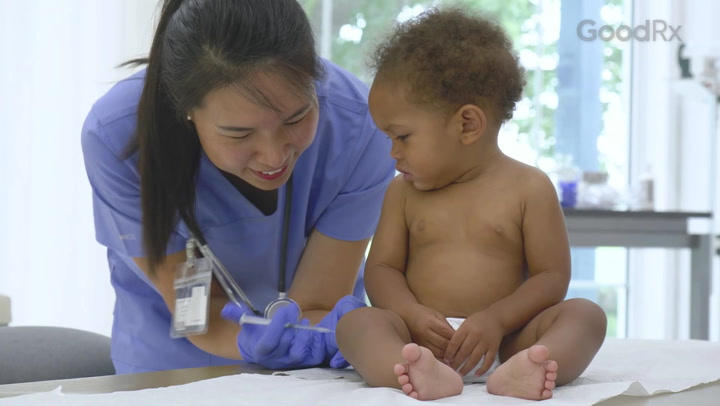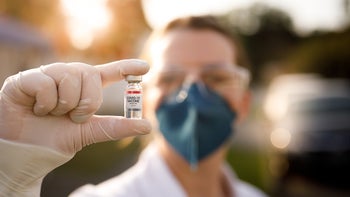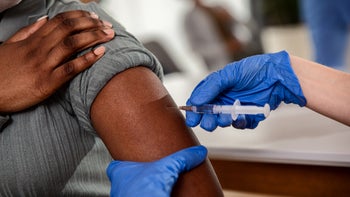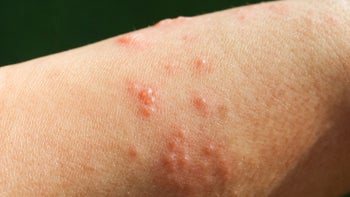
Vaccines for Children and Adolescents: Your GoodRx Guide
Key takeaways:
Babies and children get shots to protect them from 18 life-threatening infections, including whooping cough, tetanus, and meningitis.
Many vaccine-preventable diseases, such as polio and measles, are rare today because vaccines are so effective.
Vaccines are only added to the recommended schedule after years of testing and careful consideration of risks and benefits.
Table of contents

Vaccines save lives every day. Our modern vaccines work so well that many of the diseases they prevent — such as diphtheria and mumps — sound old-fashioned to us now. It’s easy to forget how deadly these infections can be, especially for young ones.
The recommended childhood vaccine schedule, published by the CDC, is a carefully designed plan that protects children from over a dozen life-threatening diseases. Babies can start getting vaccinated in the first days and weeks of life. Older infants and kids get additional vaccines and booster shots in an organized, age-appropriate way.
How do vaccines work?
The immune system is a team of cells specialized in destroying invading germs. When viruses or bacteria enter your body, your immune system fights them off as quickly as it can. If your immune system works fast, the germs can’t do much damage. But if your immune system is slow or weak, the infection can cause serious problems.
Prescription Savings Are Just the Beginning
See what other benefits you qualify for—from cashback cards to cheaper insurance.

Vaccines work by giving the immune system a heads-up. Most vaccines contain pieces of dead or weakened germs, so the immune system learns what they look like. That way, if the actual bacteria or viruses try to enter in the future, the immune system is ready to make a rapid response. Often, this response happens so fast we never know we were infected.
You may hear the term “immunized,” which refers to both active and passive immunity. Vaccines work by triggering active immunity — when your body builds its own antibodies to protect against a specific germ. But some immunizations provide passive immunity, where antibodies are given directly (through an injection or passed to the fetus during pregnancy), rather than made by the body.
Why do children need to get vaccinated?
Infections have been a problem throughout human history. Before vaccines were developed, contagious diseases like measles and polio killed many people. Babies and children were often the most affected by these illnesses.
Today, vaccines are available against many of these deadly diseases. Because of vaccines — along with other public health efforts like sanitary systems and antibiotics — children are much safer than they used to be.
Vaccines do more than protect a single person. When large numbers of people are vaccinated, contagious diseases can’t spread as easily to unvaccinated people around them (called herd immunity). This is important for safeguarding those with weak immune systems and anyone who isn't able to get regular vaccines.
Why are vaccines staggered over time instead of given all at once?
Logically, it makes sense to protect kids against all diseases as soon as possible. So why don’t we do it that way?
RSV prevention in children: Learn the differences between Abrysvo and Beyfortus, two options for protecting your child from respiratory syncytial virus (RSV).
Which vaccines are covered by insurance? Your guide to vaccine coverage through private plans, Medicare, and Medicaid.
How to prepare: Shots aren’t easy — for kids or parents. These simple tips can help make the experience less stressful and more manageable for everyone involved.
Kids should get all of their vaccines as soon as possible. But “as soon as possible” isn’t as simple as it sounds. Some vaccines don’t work very well for young babies. And some vaccines tend to wear off quickly over time. Plus, most vaccines need to be repeated several times — often months and years apart — to have a strong effect.
Some diseases are only dangerous to babies, other diseases cause problems for toddlers, and some diseases don’t pop up until later in childhood. So it doesn’t quite make sense to give all the vaccines at the same time.
The standard vaccine schedule takes all these details into account. It arranges the vaccines into a universal plan that also lines up with a healthy checkup schedule.
Read more like this
Explore these related articles, suggested for readers like you.
Is it safe to give many vaccines at once?
The recommended vaccine schedule is the safest way to vaccinate your child. If you’re nervous about the process, it might help to know that the vaccines grouped together on the recommended schedule have been tested together and given together millions of times. Top experts in infectious disease and public health — people who spend their careers studying infections and vaccines — designed the vaccine schedule.
What vaccines and immunizations are recommended for children and adolescents?
The CDC recommends immunization against 18 diseases during childhood. These vaccines and immunizations are given at the ages when children are most in need of protection. Most vaccines they get during this time are 90% to 99% effective at preventing disease.
Kids get age-appropriate vaccines and immunizations
Vaccines start early in life because babies are especially vulnerable if they get sick. Young children, who tend to spread germs easily, are also at risk. Older children, teens, and adults get vaccinated against illnesses that could cause problems for them.
Booster shots are often helpful
The recommended vaccine schedule includes a series of booster shots for babies, children, teens, and adults. Booster shots are repeat doses of the same vaccine that was given before. Getting booster shots can make a vaccine work better and last longer.
Some vaccines are combination shots
Since nobody likes getting a needle shot, similar vaccines recommended at the same age are sometimes grouped into a single shot. Pharmaceutical companies make these combinations and carefully test them for safety and effectiveness.
Some combination vaccines are so widely used they’re the only choice available. This is the case for the MMR (measles, mumps, and rubella) vaccine.
Other combination vaccines — such as Pediarix, which contains vaccines against diphtheria, tetanus, pertussis, polio, and hepatitis B — are considered an upgrade for convenience and comfort. This is also the case for tetanus, which is given in combination with a vaccine against diphtheria (Dtap, Tdap, Td, or DT).
What happens if your child misses a vaccine?
If your child misses a recommended vaccine, you’ll want to get them caught up as soon as possible.
Most of the time, missed vaccines can be given the next time your child sees their healthcare professional (HCP). But sometimes, things get complicated. Many vaccines are only approved for specific ages. There are a handful of vaccines that can’t be given close to each other in time. Booster shots need to be spread out over time, and the number of booster shots a child needs changes as they get older.
These complex situations are why the CDC publishes a catch-up schedule for vaccines in addition to the regular vaccine schedule. This schedule provides detailed instructions that HCPs can use to quickly and safely get children back on track.
Vaccinating your infant
Infants are particularly vulnerable to life-threatening infections. Even though babies are born with immune systems, they don’t have any immune memories yet. That means they’re slow to react to the infections they catch. And that’s dangerous because it doesn’t take long for an infection to harm a baby.
Vaccines help infants grow their immune system memories. By helping infants’ immune systems build quick responses to certain infections, they gain protection without ever being at risk of the infections themselves.
Sometimes it seems like infants need a lot of vaccines. This is because protecting babies has been a top priority of our public health system. Infant mortality (the number of babies who die before their first birthday) has dropped sharply since baby shots have become available to nearly everyone.
Vaccines and immunizations protect babies from these diseases:
Pertussis (whooping cough)
Haemophilus influenzae B (Hib)
Influenza (flu)
The CDC recommends that most people get the flu vaccine every year, starting at 6 months old. COVID vaccine eligibility also begins at this age, with updated shots available each year.
If the mother didn’t receive an RSV vaccine during pregnancy, babies are given antibodies against RSV in the form of an injection. Eligibility, doses, and timing depend on when the baby was born and their risk factors for severe RSV.
Are vaccines safe for babies?
Yes, the vaccines recommended for babies have been tested in very large studies. Babies have working immune systems, although they haven’t been in the world long enough to have much immunity. Vaccines give babies’ immune systems early information about germs that could be dangerous. This allows them to react faster if they get exposed to a disease. And a quicker immune response means a shorter, less dangerous infection.
Vaccinating your young child
By the time they’ve reached their first birthday, most young children have well-developed immune systems. And that’s a good thing because if you’ve been around kids, you know they can spread germs at an alarming rate.
Fortunately, some of the most dangerous infections that young children could catch are preventable with vaccines. The diseases we vaccinate against during this stage are the ones that could quickly become life-threatening — even to a healthy child.
Infants 12 months and older are vaccinated against the following diseases:
Vaccinating your preteen or teen
By the time they reach their preteen or teen years, most kids have immune memory against many of the diseases that are most dangerous to children. But a few infections tend to target adolescents and young adults especially, so we vaccinate against them as kids enter their teen years.
In teens, we give vaccines to prevent:
Meningococcal disease (meningitis)
Human papillomavirus, or HPV (a virus that can cause cervical and other cancers)
In addition, teens are re-vaccinated against whooping cough and tetanus because protection against these diseases often wears off by this age.
How to get your child vaccinated
Vaccines are part of routine well-baby and well-child care. Most pediatricians, family practice providers, and others who see kids for checkups offer vaccines. In addition to their regular healthcare professional’s office, here are some places your child can get vaccines:
A medical specialist’s office
A free or charitable public health clinic
A federally funded county health department clinic
Many local and chain pharmacies
Some for-profit urgent care centers
Paying for vaccines
Most health insurance plans cover childhood vaccines. If you don’t have insurance, there are other options for you. Vaccines for Children (VFC) is a federal program that provides vaccines at a reduced cost to health clinics. Kids who qualify for VFC can get their vaccines for free.
Preparing for your child’s vaccination appointment
Getting a shot isn’t a big deal. The worst part is worrying about it in advance. Each shot hurts less than stubbing your toe, and most vaccines don’t cause many side effects. But the build-up that can happen before a shot is given, especially in children’s imaginations, can create problems.
It’s understandable that many parents don’t want to surprise their child with vaccines. But making a big deal out of them doesn’t help, either. Let your child know they will be getting vaccines in a matter-of-fact way, and tell them it’s because you want to keep them safe. If you don’t make a big deal out of it, chances are they won’t, either.
Frequently asked questions
The risks of vaccines are very low — much lower than the risks of not getting vaccines. But vaccines can and do cause side effects. Here are the most common side effects caused by childhood vaccines.
Swelling or soreness at the injection site: Redness, warmth, or mild swelling is normal. Some vaccines contain ingredients (called adjuvants) that cause a small reaction to boost the immune response.
Fever or feeling unwell: A mild fever or fatigue is common as the immune system responds to the vaccine. Babies may seem extra tired or irritable if this happens. This usually only lasts for a day or two after the vaccine.
Rash: The measles and chickenpox vaccines can cause a mild, temporary rash for a few days.
Infection: If bacteria from the skin enter the body, it can cause an infection. Symptoms include increasing pain, swelling, and white or yellow drainage at the injection site. This situation may require antibiotics.
All of the vaccines on the schedule were recommended by the Advisory Committee on Immunization Practices (ACIP). The ACIP is a group of physicians, public health experts, and infectious disease specialists who review vaccine data. They evaluate each vaccine’s safety, effectiveness, and public health impact before making a recommendation. Their recommendations are then considered by the CDC, which finalizes the schedule.
No. In fact, vaccines work with the immune system and make it stronger. Getting a vaccine is like giving your immune system a practice test. When you get a vaccine, your immune system develops a memory for the diseases represented in the vaccine. This memory lasts for a long time — often months or years. A strong immune memory will help you fight off diseases quickly in the future.
It depends on the vaccine, and the effect is temporary. Sometimes a pregnant woman’s body will pass part of its immune response on to the baby. When this happens, the pregnant woman’s antibodies will enter the baby’s bloodstream. Although this can help the newborn baby fight infections, the immunity wears off. After a few months, the antibodies break apart. The baby won’t be able to make new ones until its own immune system has developed a memory for that disease.
Vaccines given to pregnant women are not part of the standard childhood immunization schedule.
Keeping track of your child’s immunization history is important for school, travel, and future healthcare needs. Here are some ways to manage and maintain accurate vaccine records:
Keep your child’s vaccination card updated and stored in a safe place. Bring it to all medical appointments.
Healthcare professionals and clinics keep shot records, and many states have centralized immunization databases. You can also check with your child’s school for copies.
These systems aren’t always connected. So it’s recommended for you to keep your own records together.
If you can’t prove your child had some recommended vaccines, it might be necessary to get them vaccinated again. In some cases, your child’s pediatrician might order blood tests to confirm immunity instead.
The bottom line
Vaccinating your child is the best way to start protecting them against preventable diseases early on. Experts have determined the recommended vaccine schedules to ensure that your child is protected against diseases that may affect them at different points in their life. And they are staggered in a way to achieve good immune response and long-lasting protection.
It’s understandable that you may have questions or concerns about vaccines recommended for your child. Talk to their pediatrician to get the facts so that you’ll be better informed to make the best decision for your child.
Why trust our experts?



References
American College of Obstetricians and Gynecologists. (2024). Vaccines during pregnancy.
Centers for Disease Control and Prevention. (n.d.). Diphtheria.
Centers for Disease Control and Prevention. (n.d.). Haemophilus influenzae disease.
Centers for Disease Control and Prevention. (n.d.). Meningococcal disease.
Centers for Disease Control and Prevention. (n.d.). Pneumococcal disease.
Centers for Disease Control and Prevention. (n.d.). Rubella (German measles, three-day measles).
Centers for Disease Control and Prevention. (n.d.). Tetanus.
Centers for Disease Control and Prevention. (2024). About chickenpox.
Centers for Disease Control and Prevention. (2024). About rotavirus.
Centers for Disease Control and Prevention. (2024). About the Vaccines for Children (VFC) Program.
Centers for Disease Control and Prevention. (2024). Catch-up immunization schedule for children and adolescents.
Centers for Disease Control and Prevention. (2024). General committee-related information.
Centers for Disease Control and Prevention. (2024). Immunity types.
Centers for Disease Control and Prevention. (2024). Reasons to vaccinate.
Centers for Disease Control and Prevention. (2024). Timing and spacing of immunobiologics.
Centers for Disease Control and Prevention. (2024). Vaccines for Children (VFC) Program: Information for parents.
Centers for Disease Control and Prevention. (2025). Child and adolescent immunization schedule by age.
Centers for Disease Control and Prevention. (2025). Diseases that vaccines help protect against.
Centers for Disease Control and Prevention. (2025). Staying up to date with COVID-19 vaccines.
Durani, Y. (2023). School-based health centers. Nemours KidsHealth.
HealthyChildren.org. (2021). 14 diseases you almost forgot about thanks to vaccines.
HealthyChildren.org. (2021). Vaccine safety: Get the facts.
News in Health. (2011). Community immunity. National Institutes of Health.
Shaw-Taylor, L. (2020). An introduction to the history of infectious diseases, epidemics and the early phases of the long-run decline in mortality. The Economic History Review.






